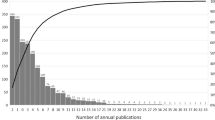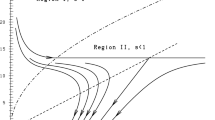Abstract
A continuous time model using optimal control techniques is presented which implies that a scientist's productivity will eventually decline with age. This implication is at variance withCole's empirical findings1 but is consistent withDiamond's empirical findings.2
Similar content being viewed by others
References
S. COLE, Age and scientific performance,American Journal of Sociology 84 (1979) 958.
A. M. DIAMOND, JR, The life-cycle research productivity of mathematicians and scientists,The Journal of Gerontology, 41 (1986) 520.
A. M. DIAMOND, JR, An economic model of the life-cycle research productivity of scientists,Scientometrics, 6 (1984) 189.
R. E. MILLER,Dynamic Optimization and Economic Applications, New York, McGraw-Hill Co., 1979.
Y. BEN-PORATH, The production of human capital and the life-cycle of earnings,Journal of Political Economy, 75 (1967) 352.
Author information
Authors and Affiliations
Rights and permissions
About this article
Cite this article
Diamond, A.M. An optimal control model of the life-cycle research productivity of scientists. Scientometrics 11, 251–253 (1987). https://doi.org/10.1007/BF02016595
Received:
Issue Date:
DOI: https://doi.org/10.1007/BF02016595




